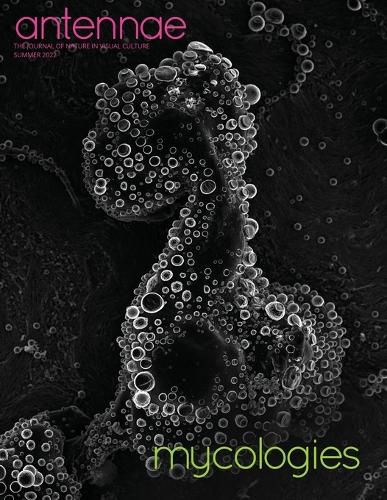Readings Newsletter
Become a Readings Member to make your shopping experience even easier.
Sign in or sign up for free!
You’re not far away from qualifying for FREE standard shipping within Australia
You’ve qualified for FREE standard shipping within Australia
The cart is loading…






This title is printed to order. This book may have been self-published. If so, we cannot guarantee the quality of the content. In the main most books will have gone through the editing process however some may not. We therefore suggest that you be aware of this before ordering this book. If in doubt check either the author or publisher’s details as we are unable to accept any returns unless they are faulty. Please contact us if you have any questions.
Over ten years ago, Anna Tsing’s essay ‘Unruly Edges: Mushrooms as Companion Species’ made its unofficial appearance in post-humanist academic circles. In 2011 it was first published in issue 18 of Antennae, and then proceeded to spawn the book The Mushroom at the End of the World: On the Possibility of Life in Capitalist Ruins in 2015.
Tsing’s work on mushrooms stood at the edge of non-anthropocentric reasoning, challenging categories and hierarchies to radically redesign conceptions of identity, companionship, and agency. To many, Tsing’s proposal initially seemed extreme, but today, after the emergence of critical plant studies, interest in omnipresent fungi and their invisible ability to support and orchestrate global ecosystems is steadily on the rise.
This issue of Antennae features the work of many scholars, researchers, and artists who have harnessed the world-forming power of empathy and imagination in order to make visible what has for too long been made invisible. Over time, they have devised new and much-needed thinking structures that can reconnect us with the ecosystems and ecologies we share with other earthlings.
$9.00 standard shipping within Australia
FREE standard shipping within Australia for orders over $100.00
Express & International shipping calculated at checkout
Stock availability can be subject to change without notice. We recommend calling the shop or contacting our online team to check availability of low stock items. Please see our Shopping Online page for more details.
This title is printed to order. This book may have been self-published. If so, we cannot guarantee the quality of the content. In the main most books will have gone through the editing process however some may not. We therefore suggest that you be aware of this before ordering this book. If in doubt check either the author or publisher’s details as we are unable to accept any returns unless they are faulty. Please contact us if you have any questions.
Over ten years ago, Anna Tsing’s essay ‘Unruly Edges: Mushrooms as Companion Species’ made its unofficial appearance in post-humanist academic circles. In 2011 it was first published in issue 18 of Antennae, and then proceeded to spawn the book The Mushroom at the End of the World: On the Possibility of Life in Capitalist Ruins in 2015.
Tsing’s work on mushrooms stood at the edge of non-anthropocentric reasoning, challenging categories and hierarchies to radically redesign conceptions of identity, companionship, and agency. To many, Tsing’s proposal initially seemed extreme, but today, after the emergence of critical plant studies, interest in omnipresent fungi and their invisible ability to support and orchestrate global ecosystems is steadily on the rise.
This issue of Antennae features the work of many scholars, researchers, and artists who have harnessed the world-forming power of empathy and imagination in order to make visible what has for too long been made invisible. Over time, they have devised new and much-needed thinking structures that can reconnect us with the ecosystems and ecologies we share with other earthlings.